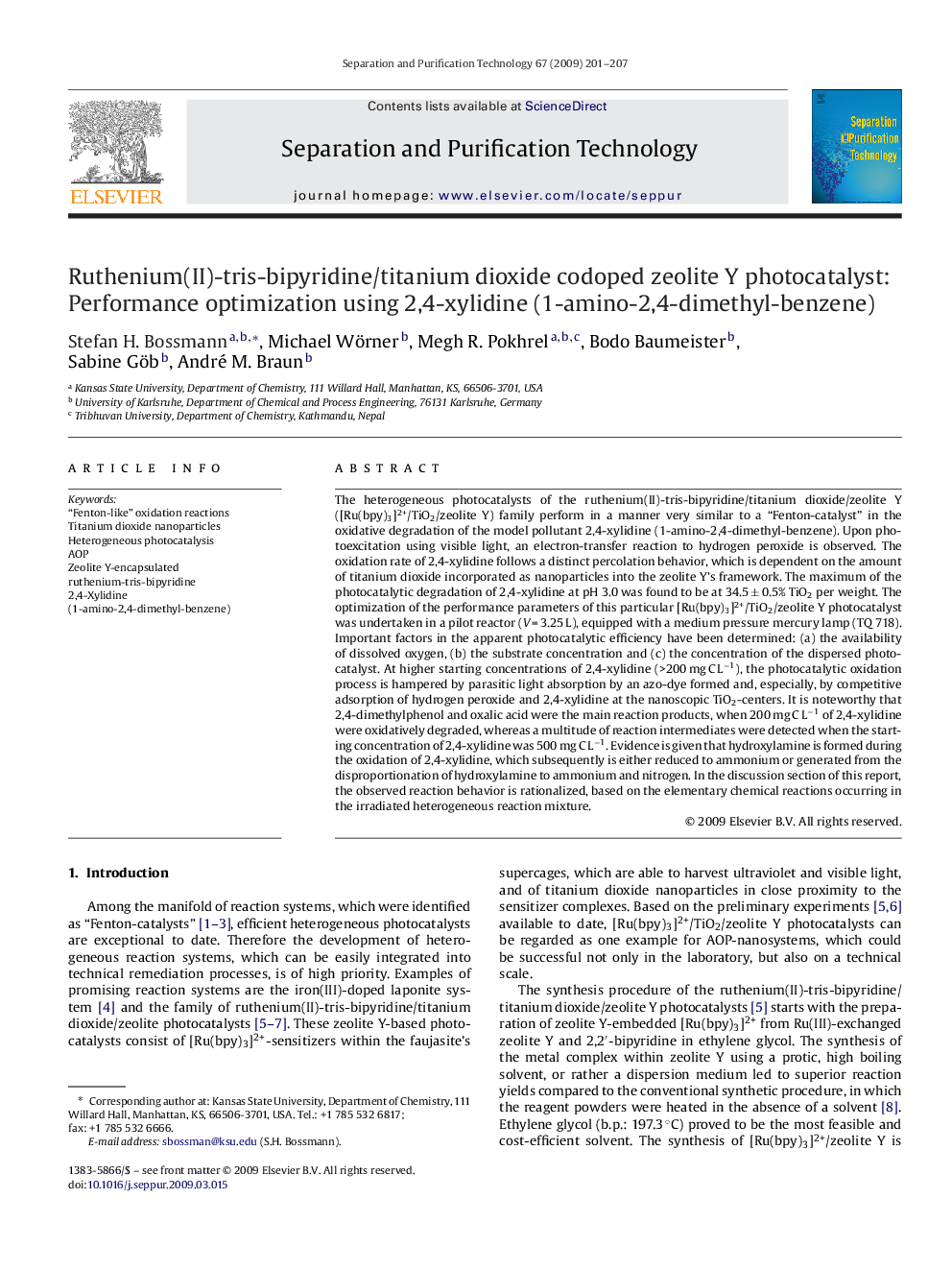| Article ID | Journal | Published Year | Pages | File Type |
|---|---|---|---|---|
| 643198 | Separation and Purification Technology | 2009 | 7 Pages |
The heterogeneous photocatalysts of the ruthenium(II)-tris-bipyridine/titanium dioxide/zeolite Y ([Ru(bpy)3]2+/TiO2/zeolite Y) family perform in a manner very similar to a “Fenton-catalyst” in the oxidative degradation of the model pollutant 2,4-xylidine (1-amino-2,4-dimethyl-benzene). Upon photoexcitation using visible light, an electron-transfer reaction to hydrogen peroxide is observed. The oxidation rate of 2,4-xylidine follows a distinct percolation behavior, which is dependent on the amount of titanium dioxide incorporated as nanoparticles into the zeolite Y's framework. The maximum of the photocatalytic degradation of 2,4-xylidine at pH 3.0 was found to be at 34.5 ± 0.5% TiO2 per weight. The optimization of the performance parameters of this particular [Ru(bpy)3]2+/TiO2/zeolite Y photocatalyst was undertaken in a pilot reactor (V = 3.25 L), equipped with a medium pressure mercury lamp (TQ 718). Important factors in the apparent photocatalytic efficiency have been determined: (a) the availability of dissolved oxygen, (b) the substrate concentration and (c) the concentration of the dispersed photocatalyst. At higher starting concentrations of 2,4-xylidine (>200 mg C L−1), the photocatalytic oxidation process is hampered by parasitic light absorption by an azo-dye formed and, especially, by competitive adsorption of hydrogen peroxide and 2,4-xylidine at the nanoscopic TiO2-centers. It is noteworthy that 2,4-dimethylphenol and oxalic acid were the main reaction products, when 200 mg C L−1 of 2,4-xylidine were oxidatively degraded, whereas a multitude of reaction intermediates were detected when the starting concentration of 2,4-xylidine was 500 mg C L−1. Evidence is given that hydroxylamine is formed during the oxidation of 2,4-xylidine, which subsequently is either reduced to ammonium or generated from the disproportionation of hydroxylamine to ammonium and nitrogen. In the discussion section of this report, the observed reaction behavior is rationalized, based on the elementary chemical reactions occurring in the irradiated heterogeneous reaction mixture.
